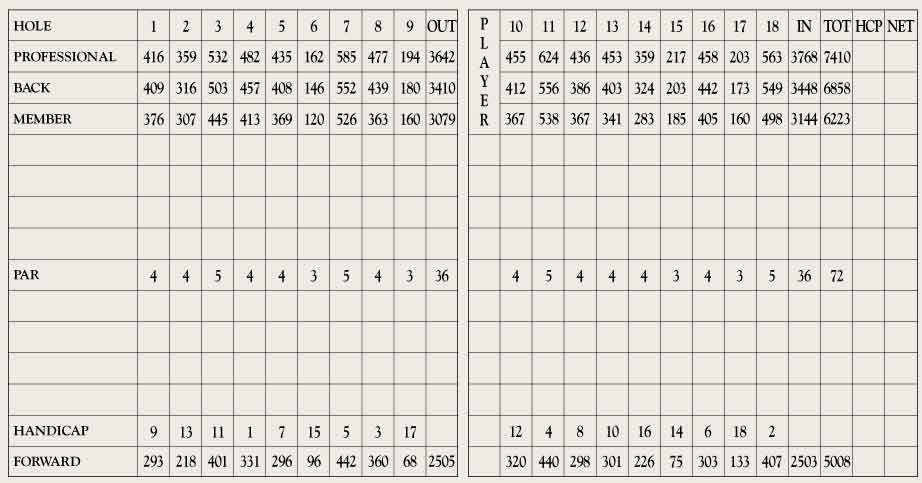If you've ever looked a golf scorecard, you've probably noticed that the handicap numbers are all even for the front or back nine, then they're all odd numbers on the opposite nine. Why is that? That's because of the handicap allocation system.
Golf courses determine handicaps by starting with what they think is the hardest hole. That's the No. 1 handicap hole. The hardest hole on a golf course is often the longest par 4, but that's not always the case. Sometimes, it can be a particularly long par 5. Sometimes it's a longer, but not the longest, par 4. It could be the hole with the most hazards and trouble for players. But setting up the handicap of holes on a golf course completely depends on identifying the toughest hole.
From there, they decide all other eight holes on that side of the course are odd-numbered handicap holes, figuring out the relative difficulty of the other eight holes on that side and doling out the No. 3, 5, 7, 9, 11, 13, 15 and 17 handicap holes. Courses go through the same allocation on the opposite nine, choosing the hardest hole on that side and designating it the No. 2 handicap hole. From there, the course figures out the relative difficulty of the other holes on the side and ranks them the No. 4, 6, 8, 10, 12, 14, 16 and 18 handicap holes, with the No. 18 handicap hole not necessarily meaning it's the easiest on the course -- but it's close.
Course typically offer separate handicap hole rankings for men and women, though that's not required by the USGA. The USGA recommends courses allocate the odd numbers on the front and the even numbers on the back, unless the back nine is decidedly more difficult than the front. They also recommend not allocating the lower handicap numbers -- i.e., the hard holes -- to the start or end of a nine-hole run.
Then, players can use their handicap index in conjunction with the course rating and tees they're playing to determine how many strokes they get for a 9- or 18-hole match. The strokes for an 18-hole match are divided between the nines, with an odd number of strokes giving that player an extra shot on one of the nine-hole sides. For example, if a player gets 13 strokes, they get a stroke on the holes ranked No. 1-13 in handicap, meaning they get seven strokes on the odd-numbered side and six on the even-numbered side. The same system applies to a nine-hole match.

